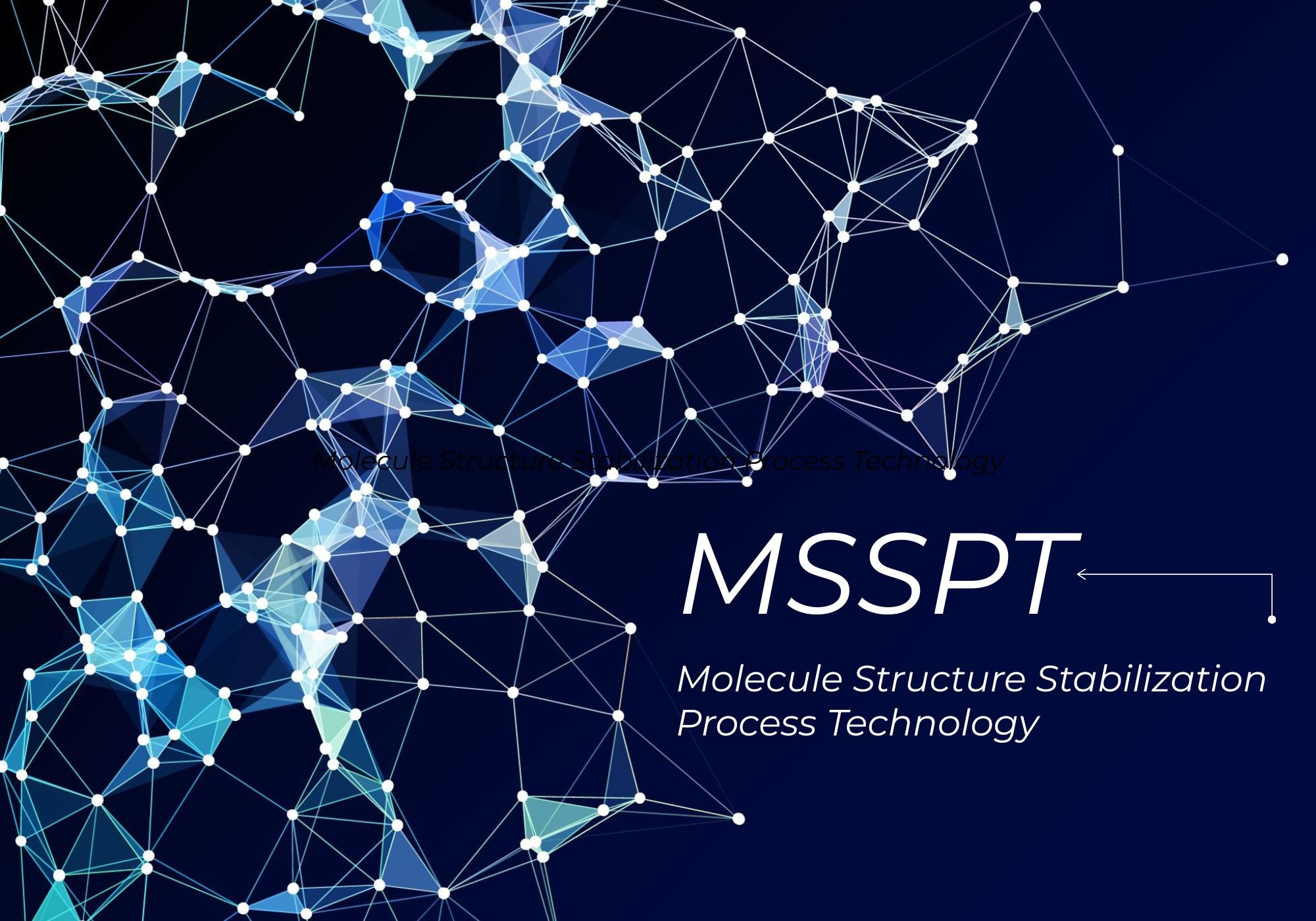Molecular Structure Stabilization Process Technology (MSSPT)
The Molecular Structure Stabilization Process Technology (MSSPT) focuses on preserving the structural integrity and functionality of molecules under harsh conditions and during prolonged storage periods. This process may involve modification of the molecule itself, optimization of storage conditions, or the use of auxiliary components that protect the molecules from degradation.

Key stages of the process:
1. Molecular modification:
Chemical and genetic engineering: Involves altering the structure or composition of the molecule to make it more resistant to degradation. For example, protein cross-linking can prevent unfolding, or modification can reduce susceptibility to chemical reactions.
Chemical modification: The introduction of protective groups or changes to reactive sites can prevent unwanted chemical reactions and degradation.
2. Optimization of storage conditions:
Lyophilization (freeze-drying): This method removes water from the sample, helping to preserve structure and prevent degradation during storage.
Storage in specialized containers: Using containers that protect from light and oxygen can safeguard molecules from photodegradation or oxidation.
Controlled-release systems: These systems provide a steady concentration of the therapeutic molecule, but introduce additional challenges related to stabilizing molecules over extended release periods.
3. Use of auxiliary components:
Buffers: Buffers help maintain stable pH levels, which are crucial for many chemical reactions and biological processes.
Antioxidants: These additives can prevent or reduce oxidative degradation, which is a common cause of molecular instability.
Stabilizing agents: These help prevent aggregation, precipitation, or other forms of degradation.
4. Understanding molecular interactions:
Thermodynamic equilibrium: A fundamental understanding of the interactions between a molecule and its environment is essential for developing effective stabilization strategies.
Detergents for membrane proteins: Specialized detergents, such as those developed to stabilize membrane proteins, help maintain their structure in solution.
Molecular simulations: Techniques such as molecular dynamics can provide valuable insights into the stability and behavior of molecules.
5. Examples of stabilization techniques:
Protein stabilization: Strategies include forming disulfide bonds, using stabilizing agents or chaperones, and introducing stabilizing mutations.
Polymer stabilization: Methods include the addition of antioxidants or the use of modified clay minerals that prevent polymer degradation.
Propellant stabilization: Stabilizers are essential to prevent the decomposition of propellants and ensure their safe and reliable performance.
Pen Peptide – Proven Molecular Stabilization
Our peptide pens are developed with a strong focus on preserving the biological activity and structural stability of the active compounds. Thanks to thoroughly researched stabilization processes—including optimization of storage environments and precise modification of molecular structure—we achieve long-term durability and reliability of the peptides under appropriate storage conditions.
The MSSPT (Molecule Structure Stabilization Process Technology) we use incorporates various approaches to maintain molecular integrity, including the use of suitable buffers, antioxidants, and stabilizing agents. The MSSPT technology allows for the integration of multiple active molecules into a compact volume without compromising their structural integrity or biological effectiveness. Additional optimization of storage conditions—such as pH control and prevention of photodegradation and oxidation—ensures maximum stability and bioactivity of the peptides.
These precise measures guarantee that the final product remains effective and stable even after extended storage periods, making it a secure and reliable option for use in various research protocols.
